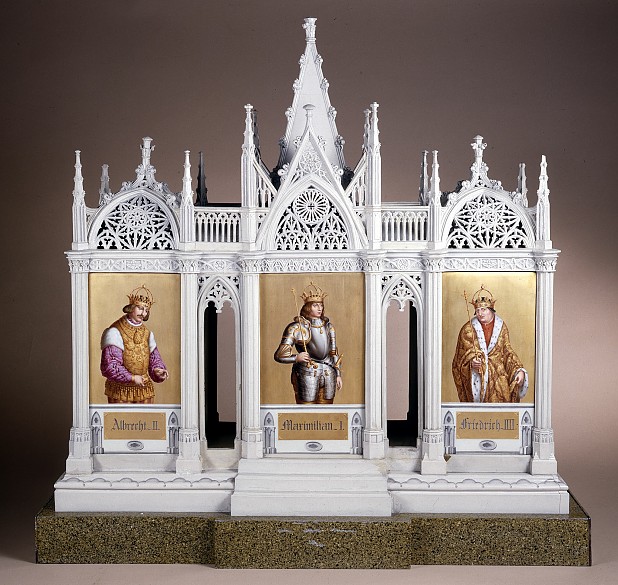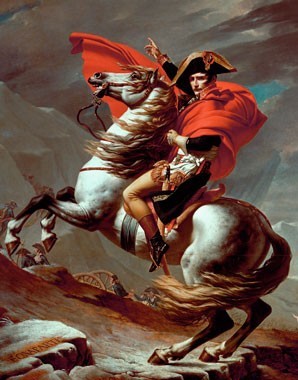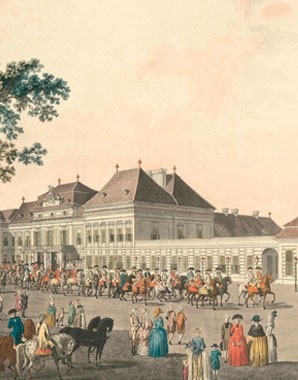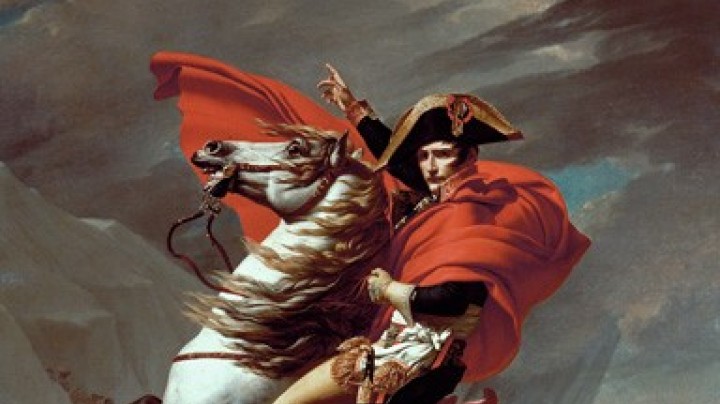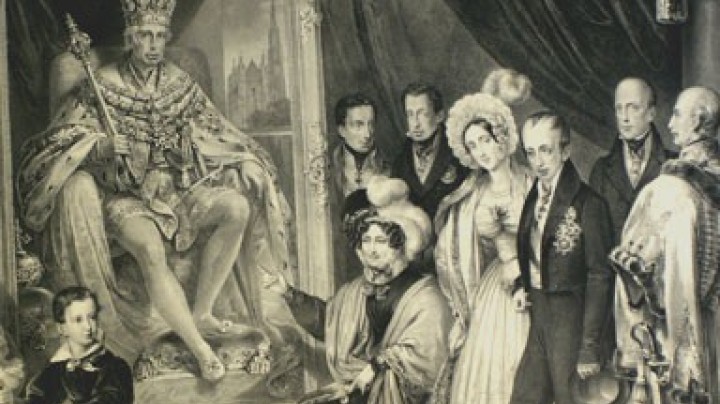The fascination of the past
The loss of political influence and the need to justify claims to power reinforced interest in dynastic history, an interest paralleled by the Romantic fascination with the Middle Ages: Emperor Franz II (I) had a knight’s castle built and dined off porcelain decorated with medieval motifs.
Around the turn of the nineteenth century, as a result of increasing scepticism towards Napoleon and the achievements of the Enlightenment and the French Revolution, many artists turned to Catholicism. This was accompanied by a patriotism stoked by the Napoleonic wars and an awakening nationalism that made exploring the national past seem more attractive than continuing the earlier idealization of classical mythology. The (German) Middle Ages, chivalry, knights, castles, fairy tales and legends were all discovered as aspects of the past for which an especial affinity was felt.
The Habsburg family also succumbed to the fascination of the past, which suited their dynastic programme: having laid aside the crown of the Holy Roman Empire of the German Nation, Franz II (I) sought to justify the foundation of the Empire of Austria by pointing to the long Habsburg tradition. Once more, the arts had the role of legitimizing the dynasty’s claim to power by drawing on the past: architecture and the fine arts were to reinforce the links to the dynasty. Ancestral galleries and genealogies experienced a revival. At Laxenburg Franz had a pseudo-historical monument to the House of Habsburg built. A ‘chivalric precinct’ with Gothic bridge and ‘tiltyard’ was constructed. At the centre of the complex was the Franzensburg with its turrets, battlements and fortifications, its entire design determined by a Romantic, backward-looking programme. Genuine medieval architectural elements and furnishings from other Habsburg estates were transferred there.
For the wedding banquet of his younger son, Archduke Franz Karl, who was marrying Princess Sophie of Bavaria, Franz commissioned a dessert service from the Vienna Porcelain Manufactory. Painted in the Romantic Gothick style, it shows portraits of Habsburg rulers from Rudolf I to Leopold II with their wives. Depicted on the dessert plates are castles and ruined fortresses, including the Habichtsburg, the ancestral seat of the dynasty. The service was used not only by the family but also at official dinners, at which the deceased members of the dynasty could now take part through the medium of porcelain.



